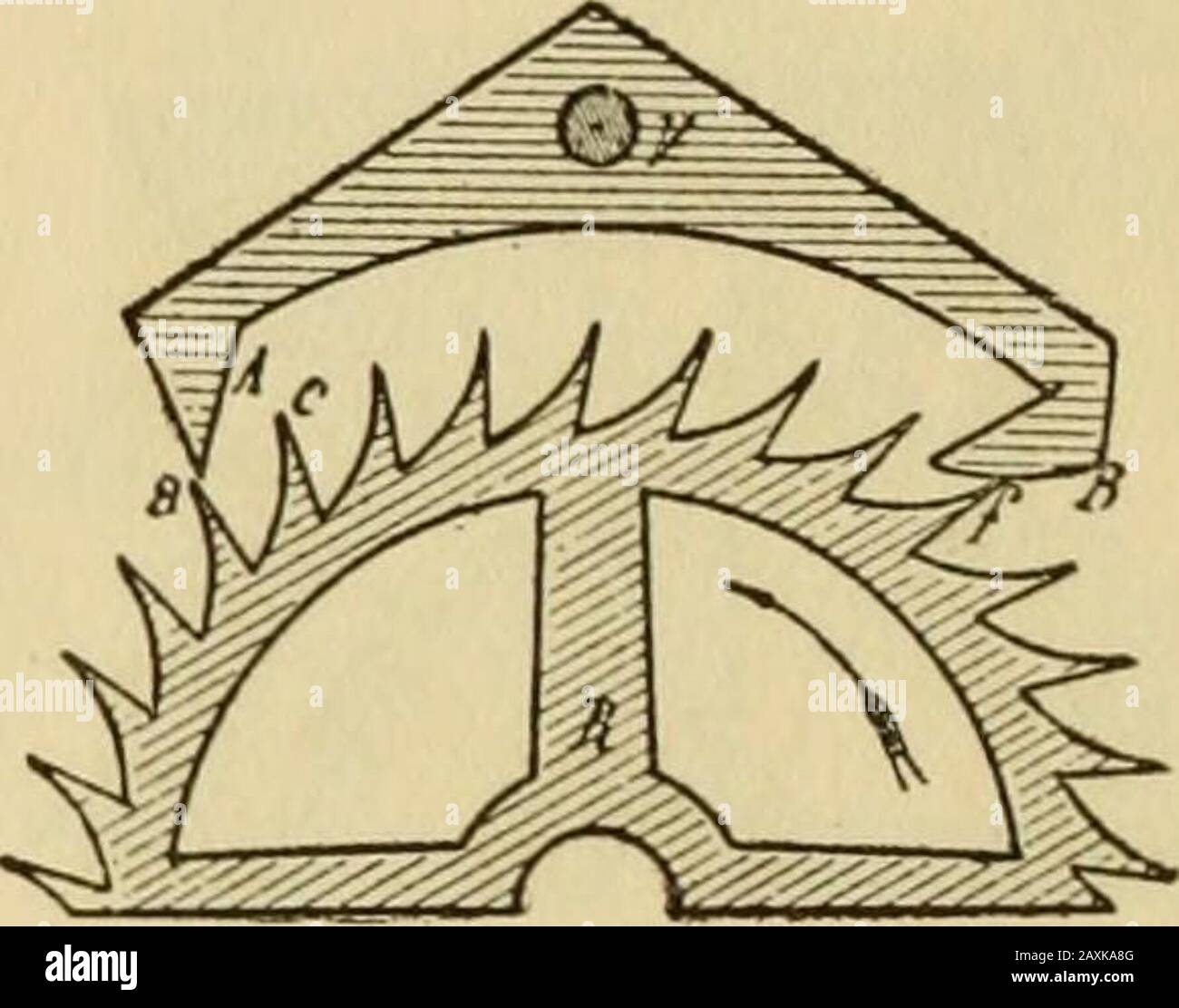Watch and clock escapements; . Fig. 166 Fig. 167 escape wheel suffers a recoil as in the pallet escapement, and on thereturn of the pendulum the tooth c gives out its impulse in thecontrary direction. With this new system it became possible toincrease the weight of the bob and at the same time lessen theeffective motor power. The travel of the pendulum, or arc ofoscillation, being reduced in a marked degree, an accuracy of ratewas obtained far superior to that of the crown-wheel escapement.However, this new application of the recoil escapement was notadopted in France until 1695. The travel of

Image details
Contributor:
The Reading Room / Alamy Stock PhotoImage ID:
2AXKA8GFile size:
7.2 MB (222 KB Compressed download)Releases:
Model - no | Property - noDo I need a release?Dimensions:
1783 x 1402 px | 30.2 x 23.7 cm | 11.9 x 9.3 inches | 150dpiMore information:
This image is a public domain image, which means either that copyright has expired in the image or the copyright holder has waived their copyright. Alamy charges you a fee for access to the high resolution copy of the image.
This image could have imperfections as it’s either historical or reportage.
Watch and clock escapements; . Fig. 166 Fig. 167 escape wheel suffers a recoil as in the pallet escapement, and on thereturn of the pendulum the tooth c gives out its impulse in thecontrary direction. With this new system it became possible toincrease the weight of the bob and at the same time lessen theeffective motor power. The travel of the pendulum, or arc ofoscillation, being reduced in a marked degree, an accuracy of ratewas obtained far superior to that of the crown-wheel escapement.However, this new application of the recoil escapement was notadopted in France until 1695. The travel of the pendulum, though greatly reduced, still sur-passed in breadth the arc in which it is isochronous, and repeatedefforts were made to give such shape to the levers as would compelits oscillation within the arc of equal time ; a motion which is, aswas recognized even at that epoch, the prime requisite to a preciserating. Thus, in 1720, Julien Leroy occupied himself working outthe proper shapes for the inclines to produce this